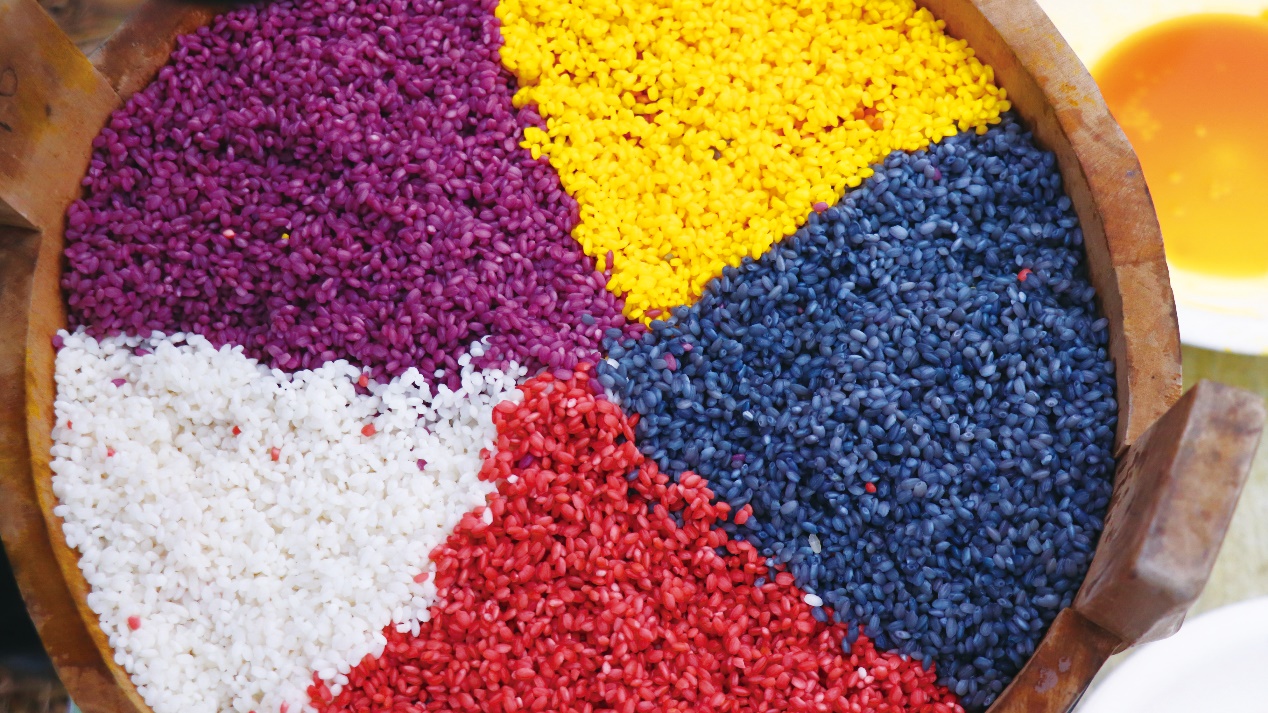A Bite of Daming Mountain: Beauties of the Five-color Glutinous Rice
Publication time:2023-05-24 16:57:49
Written by Yan Qiaohong / Translated by Chen Yijia
Located in central Guangxi, Daming Mountain stretches across Wuming District and other three counties including Shanglin, Mashan, and Binyang. With an average altitude of 1200 meters, it enjoys a reputation as the “green pearl” at the highest peak of midwestern Guangxi. The surrounding region of Daming Mountain is regarded as an important birthplace of the Zhuang Minority culture.
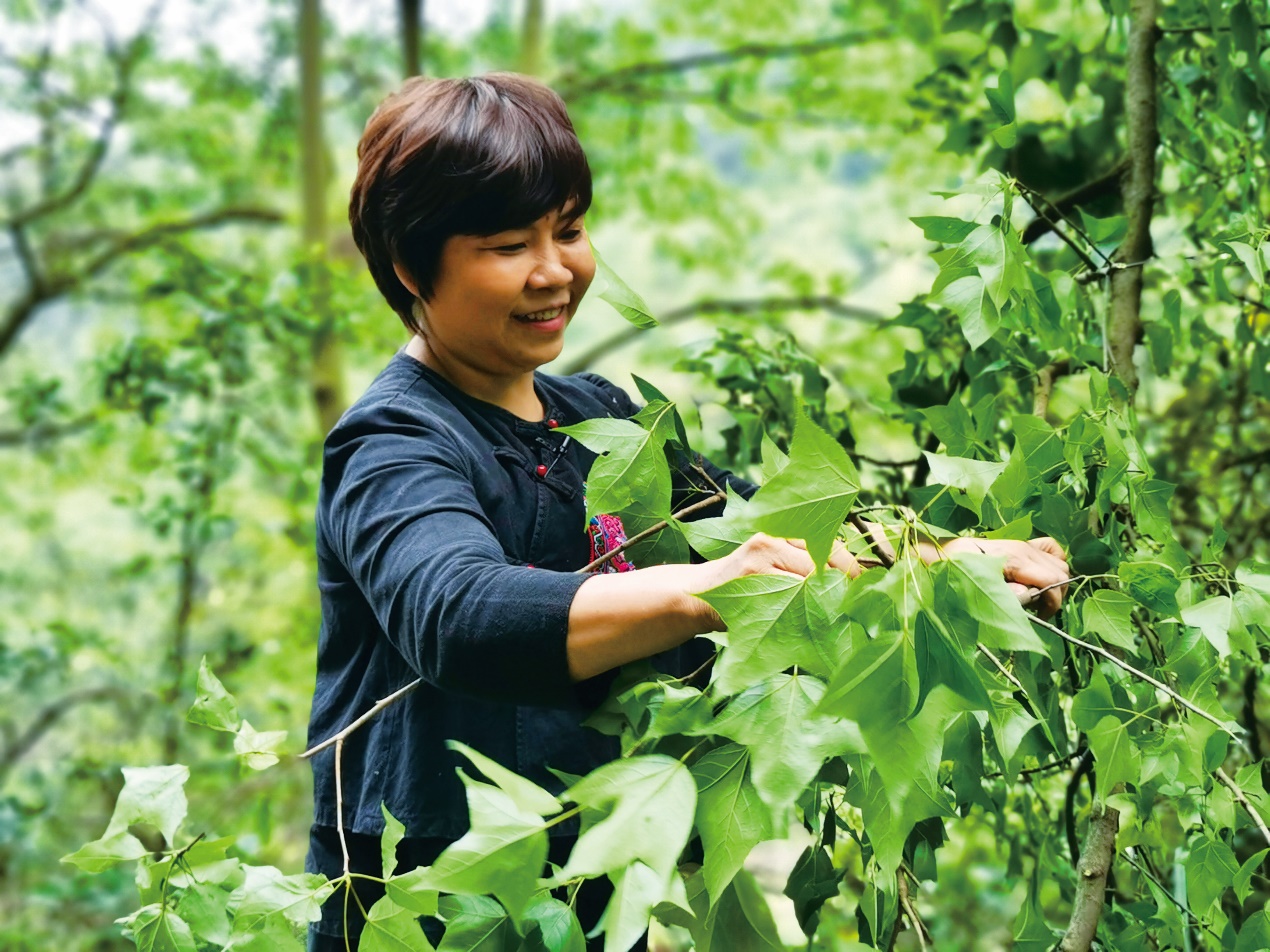
At the very beginning of the third lunar month, there’s a stronger feeling of spring in the air of Nanning, Guangxi. Warm breezes have blown away a spell of humid weather, while the yellow Mimeng flowers have been in full bloom. Around this time each year, glutinous rice is ubiquitous in the bustling produce market of Wuming District, Nanning. Once you lift the lid of the steamer, the colors of glutinous rice will lend a gorgeous landscape in black, red, yellow, white, and purple to the spring.
However, neither do few people know that the yellow Mimeng flowers are one of the edible vegetable dyes for making yellow glutinous rice, nor do they understand the deep meaning of regarding wild greens grown in remote mountains as ingredients except for the perfect combination of colors, smells, and tastes.“The flowering period is approaching.” Pan Honghua indicated that it was time to leave for Daming Mountain.
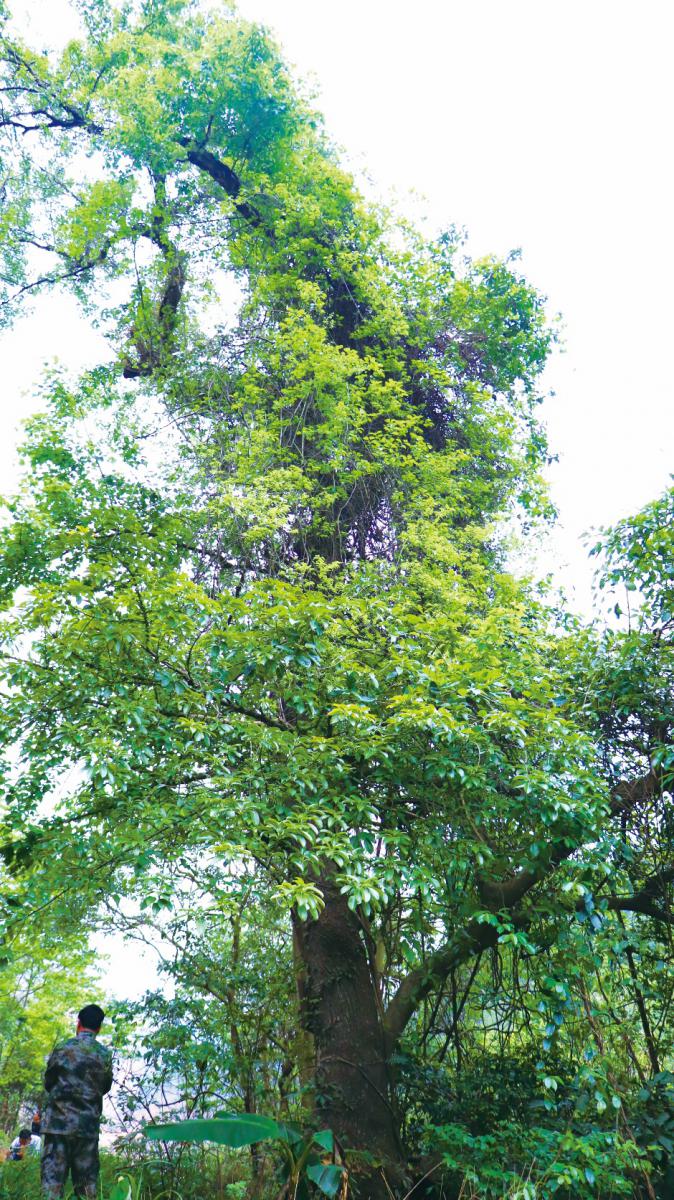
Searching for vegetable dyes in the primordial forest
The mountain road here was far more rugged than what I had supposed before.
Driving among the mountains was like sitting in a boat to sail upstream. A wave of nausea had swept over us, and it was so overwhelming that we had no more extra pep to appreciate the charming natural scenery outside the windows.
Pan was sitting on the front passenger seat, chatting with other fellows without restraint. She was the organizer of the picking activity, as well as the preserver who had carried on the techniques for making five-color glutinous rice, which had been included in the List of Intangible Cultural Heritage.
“It must be the first time you’ve been to the mountainous region, am I right? Nowadays, the young seldom can adapt to the rough life here, unlike Xiaoming. He’s a typical Zhuang fellow, born and raised in the mountains with his grandparents. He can make glutinous rice, dye clothes, sing folk songs, you name it! What was that Internet buzzword for him? Something goes like...”
“Precious boy,” someone reminded Pan.
I gazed at Xiaoming, who was in the short distance. He was dressed in a traditional Zhuang costume, carrying a bamboo basket and standing on the stones. Behind him, the narrow mountain trails were watered by a rapid stream. It was indeed a gorgeous view if we could turn a blind eye to the fact that the off-road car he took had run aground because its chassis was not high enough.
“Sister Pan, are those maple leaves?” Someone noticed the dye for making black glutinous rice outside the windows. “Yeah, you’re right, but the forest of maple trees in the mountains is more magnificent than what you have seen here.” Pan was indeed more familiar with our itinerary and had more affection for this land. “Daming Mountain is the birthplace of Luoyue Culture. That’s why we call it the mother mountain. It is said that the tradition of eating five-color glutinous rice when the Sanyuesan Festival comes was rooted here.”
Although she has been living in Nanning with her grandparents since childhood, Pan has been immersed in Longmu and Luoyue Cultures.
We soon arrived at a wide forest. The bumpy mountain trails disappeared from our sight, and so did the cellular signal. Pan alighted from the car. Besides searching for vegetable dyes, she was going to cooperate with the media for a promo video. “This is Shiye grass. It's good for your liver.” Facing the camera, Pan gushed about the edible and medicinal virtues of all kinds of plants.
Our procession gradually scattered. Xiaoming was a long way behind, cutting a plant with a sickle. The plant was nearly half a person in height without flowers and leaves, but its branches were visibly luxuriant. Xiaoming uprooted it without hesitation and explained that Mimeng flowers usually bloom in March or later in early April. He was going to plant the one in his hand, for it had yet to bloom.
As we walked into the recesses of the forest, the views were a constant source of surprise and delight. The chirps sounded faint as the mountain stream came bubbling between the stones. We snaked our way through dense bushes, seeing various butterflies fluttering by our sides.
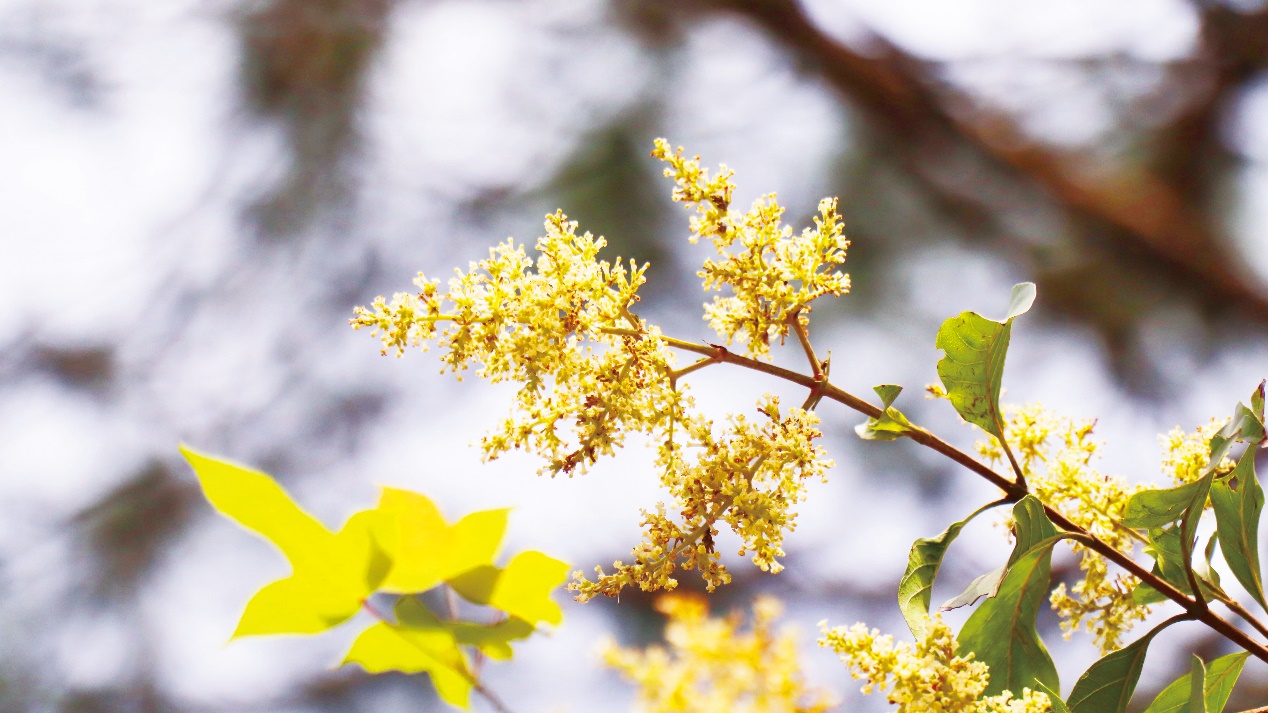
Tips: “Huangfan grass” (literally means grass for dyeing rice in yellow), technically known as the Mimeng flower, belongs to the Buddlejaceae family and is the dried flower bud. During the flowering period in February and March, the flower buds are picked before blooming. After cutting off redundant branches and rinsing impurities, the buds will be dried in the sun and later preserved in a dry and ventilated place. It is a vegetable dye for making yellow glutinous rice.
“Here we are,” Pan said and stopped. It seemed that she wouldn’t go farther along the way. “Did you see the tree covered with maple leaves? It’s a century-old maple tree.” We all looked up as we heard what Pan said. The trunk was about 20 meters in height, with its branches twined thickly by other parasitic plants, which made the whole tree look like a huge banyan tree in a far distance. Other fellows wouldn’t notice it if Pan didn’t remind us. “It has been protected by satellite positioning. People are not allowed to chop it down. Look at its leaves! The new buds are the best, for they have the greatest smell and taste. But we can only snap the small twigs instead of the big branches. Then it will regrow in the next year.”
Pan had harvested a whole basket of maple leaves with the help of the locals. Although there was still enough space for more leaves, she was already satisfied with what she had got for she realized that these were gifts from Daming Mountain. Moderately extracting from nature is what embodied the grateful hearts of the Zhuang people.
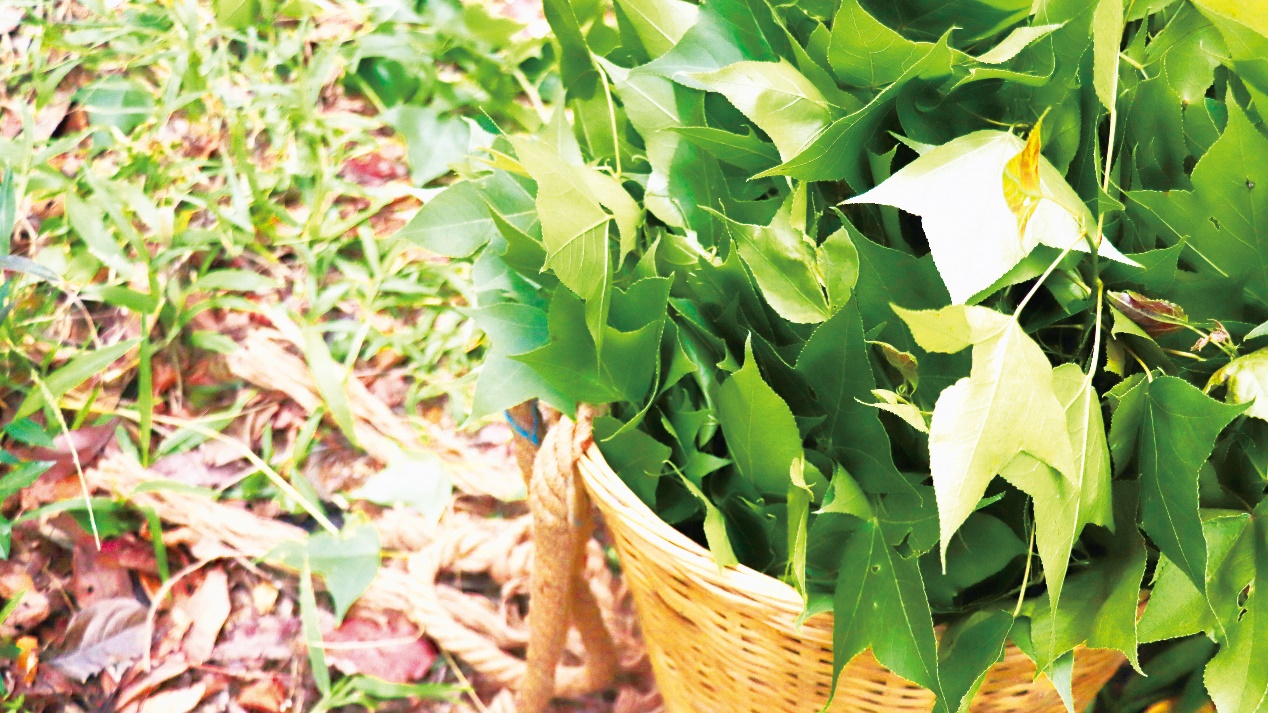
Tips: Maple leaves, technically known as sweetgum, are tender leaves of the Hamamelidaceae family. The picking activity of the leaves should be in accordance with the time. Only tender leaves and twigs sprouting around the Qingming Festival (Tomb-Sweeping Days) can make black glutinous rice.
Dyeing and steaming at the foot of the mountain
We started to ascend the mountain from Jingsan Village, which is located on south of Daming Mountain. Pan also chose the village to cook rice since it lay at the foot of the mountain, and villagers here lived on the mountain spring, which will be a perfect ingredient to make luscious glutinous rice. After a rest from the picking, Brother Wei piled up huge mounds of wood to build a fire in the field, readying for a feast of glutinous rice in this delightful rural scene. Generally, the processes of making glutinous rice are as follows:
1. Give the food colorings a rinse and cut them into small shreds. Boil up the shreds with plenty of water in an iron pot. Cool the colored water down before using it to soak rice.
2. Put the raw glutinous rice in a basin and pour in the colored water. Soak the rice in colored water overnight. Do not wash the rice, and keep it dry before soaking.
3. Wait for the next day to steam the rice. Wash the colored rice first. Then lay a piece of gauze in the steamer. Put the rice respectively into the steamer like a flower with five petals in different colors and steam it over high heat until a faint aroma of plants emanates from the cooked glutinous rice.
As time was limited, Pan could only show us the steaming process with prepared glutinous rice and colored water. The whole process lasted for about two hours. The smoke of log fire was wafted along by the breeze in the village, and the scene depicted an original life in Daming Mountain.
“Agriculture forms the backbone of Zhuang people. We have a farming culture with a long history. Harvesting glutinous rice grains also requires long and complicated processes.” In Pan’s opinion, from seedling cultivation, rice transplanting, irrigation to the final harvest — every process counted. It was exactly the profound affection toward farming of the hard-working Zhuang people that endowed the glutinous rice with sweet and subtle flavors.
While the rice was steaming, Pan also gave us a demonstration of crushing maple leaves in the stone mortar by hand. Although human labor could have been displaced by machines in modern life, we could still experience ancient people's great difficulty in dyeing rice.
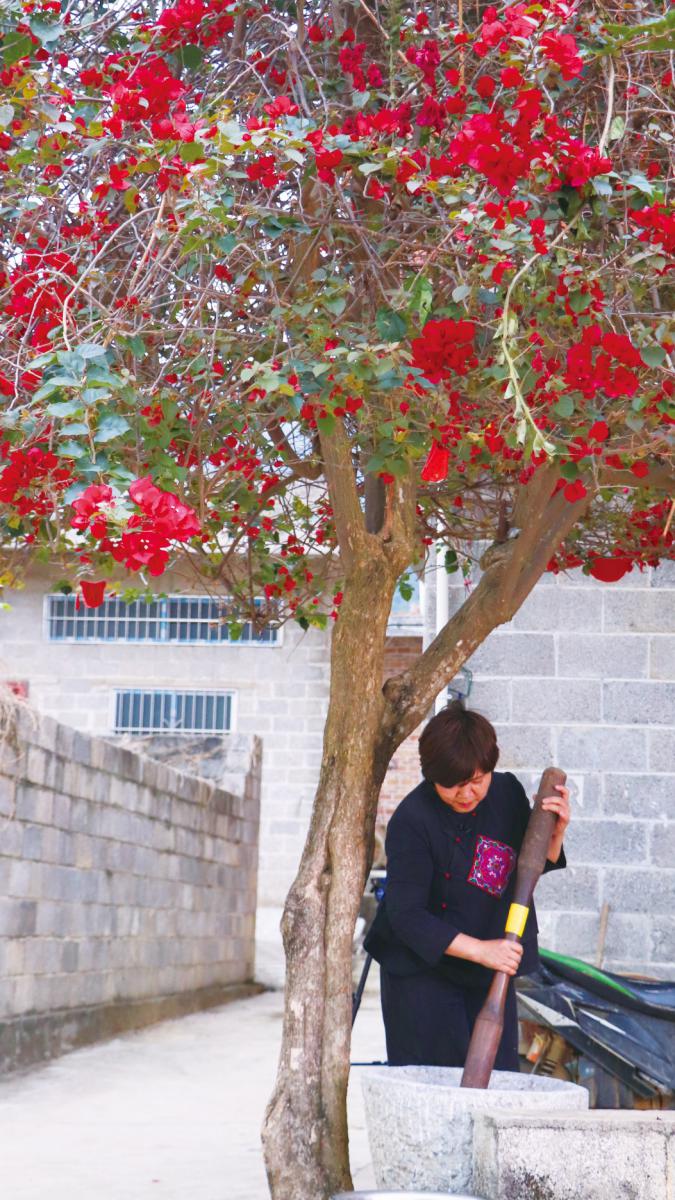
Building a cultural zone for the popularity of glutinous rice
In downtown Wuming, we visited the cultural zone that aims to protect and preserve the techniques for making five-color glutinous rice. A stove, a bamboo stool, a long table, and a bonfire — a scene of Zhuang people’s ancestors steaming glutinous rice had been displayed vividly in front of us. It might also be Pan’s first impression of five-color glutinous rice, which was described by her grandparents when she was young.
“It’s more than a ball of glutinous rice. It’s the collective memory of Zhuang fellows’ filial piety, solidarity, values, and happiness,” said Pan.
Zhuang people’s five-color glutinous rice processing techniques were added to Guangxi’s Intangible Cultural Heritage protection list on May 31, 2010. For a long time, Pan had researched in cooperation with the Wuming Cultural Center to preserve the processing techniques as a memory of ethnic culture. Since the cultural zone was inaugurated in 2018, she has determined to further inherit and promote the techniques.
“To be honest, every Zhuang people in Guangxi is quite capable of inheriting the techniques for making five-color glutinous rice. It isn’t an obscure thing. I’m just lucky enough to be the representative to carry on and develop our culture. But the road ahead is bound to see some ups and downs…” Pan said the five-color glutinous rice could be ready for mass production and market entry unless she had licenses for food production and hygiene, which would represent a major expenditure of money and time. It was hard to juggle the company’s economic effect, the production of the product, and the application for licenses. That’s why she was trapped in a stagnant stage.
“I used to work on product design. One of the reasons I shouldered the responsibility to inherit the culture is that I could feel the beauties of the glutinous rice. Its five colors are bright and fabulous...”
Indeed, the beauties of five-color glutinous rice are not only manifested in its five colors, are they?
